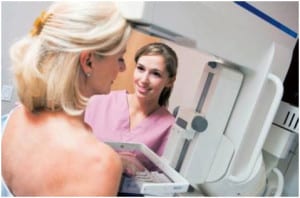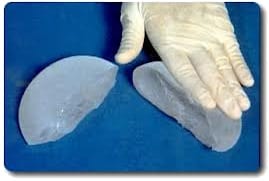DIEP flap breast reconstruction
There is a wide range of options for women who choose to regain the fullness of a breast. Breast reconstruction using your own tissue gives the best results. The DIEP flap is the most evolved technique and is considered the ‘gold-standard’ or Rolls-Royce amongst the other techniques.
What is DIEP Flap Breast Reconstruction?
DIEP flap breast reconstruction creates a natural looking breast using your own skin and fat from your tummy. Due to advanced microsurgical techniques, this can be accomplished without removing the main tummy muscle and without breast implants.
What makes this technique better than other techniques?
Compared to other breast reconstructions with own tissue, no muscle is harvested to provide the bulk and blood supply of the new breast. This means that recovery is usually faster and easier.
The risk of abdominal complications such as bulging and hernia is very small.
Compared to breast reconstruction with implants, there is a better shape and symmetry of the new breast. The consistency of the belly tissue is very similar to natural breast tissue. Your new breast will evolve with changes in body weight.
Breast reconstruction using your own tissue is popular because it’s a long-lasting solution (implants usually have to be replaced after 10 to 15 years and may create severe capsular contracture after irradiation/radiotherapy, resulting in a painful, stiff , unnaturally looking breast)
The DIEP flap procedure has a very low failure rate . In our centre the success rate is 98 – 99 %.
The DIEP (Deep Inferior Epigastric Perforator) flap is a sophisticated modification of an existing surgery known as the TRAM (Transverse Rectus Abdominis Myocutaneous) flap.
The TRAM flap procedure is a common breast reconstruction technique that requires the sacrifice of at least a portion of the rectus abdominis (sit-up) muscle. Unfortunately, this technique can be associated with significant post-operative pain, prolonged recovery and a host of abdominal complications such as loss of abdominal muscle strength (up to 20%), bulging (or “pooching”), and even abdominal hernia.
The DIEP flap procedure is very similar to the TRAM flap except that it spares the rectus abdominis muscle completely. Skin and fat only are removed from the abdomen, transplanted to the chest and connected using microsurgery to create the new breast. No muscle is sacrificed. As the sit-up muscle is left behind in its natural place many of the above complications are avoided and the patient essentially receives a tummy tuck at the same time. There also tends to be far less pain and a quicker recovery time because the abdominal muscles are left in place.
Like the DIEP flap, the SIEA (Superficial Inferior Epigastric Artery) flap completely preserves the abdominal muscles. The main difference between these two procedures is the artery used to supply blood flow to the newly reconstructed breast. From a patient’s perspective , it is not important whether a DIEP or a SIEA will be used , as the surgeon will select the best donor blood vessel (which will be plugged into the recipiënt mammary artery and vein) .
What are the disadvantages?
This operation leaves a scar on your tummy, comparable to a tummy tuck scar from hip to hip.
Because of the extra time required for the blood vessel microsurgery, DIEP flap surgery takes longer than other breast reconstruction surgery (around 6 hours operating time)
if a DIEP procedure fails, the tissue flap may die and have to be completely removed. In that case we still can offer you a latissimus flap reconstruction. This will be done free of charge in that case.
Am I a good candidate?
There are two main criteria to undergo a DIEP-flap breast reconstruction :
you should be able to undergo a long general anaesthesia, I.e. you should be overal healthy
you should have clearance from your oncologist.
You can still have a DIEP after you have had abdominal surgery (hysterectomy, c-section, appendectomy, bowel resection), but not after a previous tummy tuck.
Also thin women may have enough abdominal fat to spare. The amount of abdominal fat is usually underestimated by patients and doctors alike. Due to our experience in well over 600 cases , we are bold enough to say that nearly every women can have a DIEP flap. In the rare cases where this is not possible, we will do a SGAP flap.
A DIEP flap can be performed after previous chemotherapy or radiotherapy. Ideally your breast reconstruction is done immediately at the time of mastectomy. If this was not the case then we recommend you to wait 1 year.
Quiting smoking at least 1 month before surgery decreases complications.
Is additional surgery required ?
Asymmetry between both breasts, may require a contralateral (at the other side) breast lift or breast reduction.
Usually after six months a nipple and areola reconstruction can be performed under local anaesthesia.
Can I have a DIEP flap after I had another type of breast reconstruction o rafter failed breast implants with multiple revision procedures ?
Yes , If you experience complications from a previous breast reconstruction with an implant, you may consider removing it and replacing it by a DIEP flap.
What is a SGAP flap ?
Similar to a DIEP-flap, skin and fat tissue can also be taken from your buttocks, without removal of muscle.
What is a skin sparing mastectomy for genetic / hereditary breast cancer eg. BRCA1 or 2 ?
Young women who have to undergo a bilateral preventive breast amputation (mastectomy) , are good candidates for skin sparing mastectomies with DIEP flap breast reconstruction.
Only the breast tissue and the nipple plus areola are removed, while the skin is not removed. In some cases , the nipple and areola can be spared as well.
Skin sparing mastectomies give the minimal amount of scarring on the breast. The scar is located where the nipple and areola were. During the same operation, the breast tissue is replaced by fat and skin from two DIEP flaps. Skin sparing mastectomies are equally safe as classic mastectomies.
Sometimes preventive ovariectomies (removal of the ovaries) are indicated in hereditary breast cancer patients. We often combine this with the DIEP flap harvest, leaving no additional scars and avoiding additional surgeries for the patient.
Women who have had a previous mastectomy and are high risk for developing breast cancer in their breast, can have mastectomy of their breast and immediate bilaterals DIEP flap breast reconstruction.
How to choose your surgeon ?
Following breast cancer, reconstructive surgery can provide excellent results. Unfortunately, due to the complexity of the surgery few breast centers offer DIEP flap breast reconstruction despite the many advantages over older techniques. Only few plastic surgeons are specialized in DIEP flap surgery.
DIEP flap is microvascular surgery. This means that your surgical team uses a high-power microscope to perform the reconnecting of blood vessels. It requires extensive experience from the plastic surgeon, in addition to a well organised team and special facilities.
In our centre we have performed 600 free flaps in the last 5 years. This means at least 2 flap per week.
We have a success rate of 98 % .
It is best to arrive the day before , so that our radiologist can do the angio-scan in order to map out the best blood vessels of the abdominal flap. The receptor artery which we usually use is the internal mammary artery, which is located underneath the side of the chestbone. This is explored and dissected between two ribs, without the need of removing one of these ribs (which many surgeons do…).
You will stay 6 days in the hospital, and another week in a hotel (of your choice ; there is a BB for 35 £ per night), so that we can check the wounds on a regular base.
After 3 months the nipple will be reconstructed, as well as a contralateral breast reduction or uplift (at the other side) whenever this is indicated.
After another 6 weeks, the nipple tattoo can be performed , under a local anaesthetic. This can be done in London. In 10 % of cases this tattoo needs to be repeated.
Microvascular Plastic Surgeons : (working as one team) :
Dr Steven Colpaert , Dr Bert Oelbrandt
Both of us trained in Belgium and in the UK . Belgium is the country where per capita most DIEP flaps are performed in the world.
We have done 600 DIEP or other free flaps in the last 5 years , i.e. 2 per week.
COST FOR THE PROCEDURE
approximately 11.000 Euro’s all-in (except for the postop 7-day stay in the bed and breakfast , which is 50 euro’s per day).
This is the quote for the procedure , and the 5-day stay in the hospital , with 1 night in the mid-care unit immediately postoperatively.
Further info :
Your procedure will take place in a state of the art Belgian public NHS hospital. You always will get a personal treatment, and will never feel like a number.
It is best to arrive the day before , so that our radiologist can do the angio-scan in order to map out the best blood vessels of the abdominal flap. The receptor artery which we usually use is the internal mammary artery, which is located underneath the side of the chestbone (sternum) . This is explored and dissected between two ribs, without the need of removing one of these ribs (which many surgeons do…).
The Belgian public hospital is very safe, since there is an intensive care unit, emergency department 24/24 , radiology department, cardiology etc…
All nurses are trained extensively, and speak good english.
FIRST CONSULTATION
You will see Dr Oelbrandt , before the operation in London, and also afterwards for check-ups in London. Hence there are no surprises before or after the operation . He is registered with the belgian and UK GMC, and he is also a member of the belgian royal society of plastic surgeons ( the official society for plastic surgeons in belgium). Both Dr Oelbrandt and Dr Colpaert trained both in Belgium and abroad (Belgium , UK , and India) and are GMC approved.

